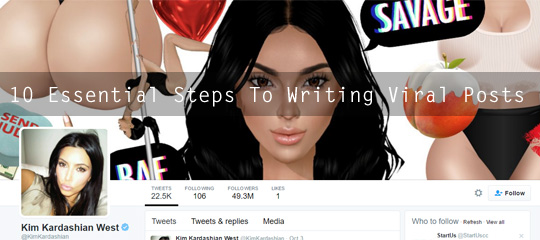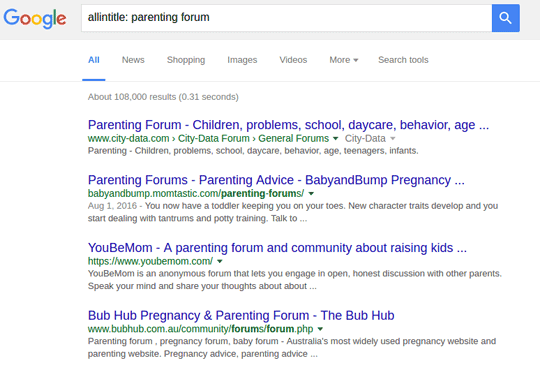Going viral has become the Holy Grail of writers, content producers and marketers of the internet age. The exposure that comes with becoming an internet sensation can make a business, kick-start your career, or simply generate a buzz around an important social issue.
It’s tempting to believe that the secrets to going viral are held by a shadowy coalition of internet celebrities who rule cyberspace, but the science behind viral campaigning comes down to a few actionable points that you can use to send the traffic of your website or blog through the roof.
Here they are:
1. Produce High Quality Content
You’ll hear this time and time again, because it’s true and unavoidable. There is simply no substitute for high value. High value content can come in the form of practical advice to help your readers lead a happier more satisfying life, improve their life skills, or simply provide entertainment.
Whatever the case, the reader should be left feeling that they have gained something from the reading experience. If this fundamental step is something you feel that you struggle with, one way to counteract this is to employ the skills of a guest blogger or professional writer.
Some excellent content guides can be found here and here, but as a checklist, great content should have:
a) An attractive headline
This is the first impression most readers will have of your post. An enticing headline will get people clicking. Even if you have the best content, without an alluring title, readers are likely to skim over your link without a second thought.
Headlines should be clear and concise, be relevant to your article, intrigue the reader and hint at the value and readability of your post.
Negative headlines such as “Why You’ve Been Brushing Your Teeth Wrong!” tend to catch more attention than positive ones, i.e. “How to Brush Your Teeth Correctly”
b) Lists
Although this isn’t compulsory, studies show that headlines containing numbered lists draw more traffic. i.e. 5 Must Haves for Your Pool Area.
c) Solid Structure
Use points and subtitles to visually break down the information in your post. Most online readers will click away from dense paragraphs and pages lacking the variety of bold or italicized print.
d) Action Points
Make sure the advice you give is immediately actionable, meaning the reader can easily start incorporating the tip into his or her daily life. i.e. “Start your day with fresh fruits and a sugarless cereal” offers more practical value than “Eat a healthy breakfast”.
e) Visual Appeal
High quality images drive web traffic. Coupled with a powerful headline and you’ll be unstoppable. Content analytics researchers at Buzzsumo concluded that an image is twice as likely to be shared (on Twitter or Facebook) than a post with no images.
Content marketer, Skyword found supporting data with total views increased by 94% with the inclusion of a quality photograph or relevant infographic.
2. Write From Personal Experience
Giving an authentic first-person narrative makes information easier to digest than raw data. It also makes you, as the author of the blog, more relatable as a human being. Rather than giving endless statistics and graphs to support your ideas of good business leadership, try giving a personal account of a time your company excelled because of a decision that you or someone you know made. It’ll add interest and make the blog a lot more interesting.
While on the subject of relating to your readership, you should also encourage your readers to comment on your post and leave their own experiences. This will draw more comments and hence more traffic.
3. Be Original
You are an individual with unique interests, experiences, opinions and means of expression. Capitalize on this to make each blog post unique and interesting. You don’t have to sound like every other blogger or internet personality. Develop your own style and voice and use that to attract subscribers.
Readers will admire your authenticity and willingness to share from your own experiences.
4. Be Emotive
Highly emotive blog posts perform well. Something that captures a reader’s imagination and tugs on the heart-strings is more likely to be shared. High-energy emotions, whether positive (awe and excitement) or negative (fear, anxiety, anger) outperform low-energy emotions such as sadness.
As a perfect example of a post that tugs on the heart-strings and elicits positive emotion, check out this article by Jack Shepherd, the editorial director at BuzzFeed, entitled The 100 Most Important Cat Pictures Of All Time.
5. Capitalize On Current Affairs
Readers gravitate towards things currently being discussed in the public arena. You can get an idea of what’s trending by using tools like Google Trends, or by checking out what’s dominating the Twittersphere. Buzzfeed, Digg, StumbleUpon and Reddit will also help you keep your ear to the ground about latest developments in popular culture.
Your niche may not have much to do with what’s happening with the American elections or Kim Kardashian’s wardrobe, but by finding clever ways to connect them, you can draw readers from other circles into your niche.
Another way of providing content that is current and topical is to find out what kinds of questions people are asking at the moment. Typing: allintitle: ‘keyword’ forum into your search engine will give you a list of relevant forum discussions containing that keyword. For example, if you type in the keyword as ‘parenting’ you’ll get over 125,000 results. That’s a whole lot of blog ideas waiting to happen.
6. Practical Advice
This is really your opportunity to demonstrate value. A practical takeaway means that you offer actionable tips that work. Breaking things down into their specific doable components means the difference between a reader glossing over an article on healthy living and deciding it isn’t for them, and them realizing, “Hey! That isn’t so hard! I can do that!”
By leaving your reader with information that they can actually put into practice to see results, you’re offering value. And with this kind of value, the numbers will speak for themselves.
7. Social Media Buttons
If you want a lot of shares, you have to make it easy for your reader to do so. By adding social media buttons to your page, you ensure a quick, easy option for the reader who is keen to pass on the information.
To optimize this, get to know your audience and which social media networks they’re likely to be using. Is your audience the LinkedIn or Facebook type? Instagram or Tumblr? If you’re unsure, you can always add all of them and narrow down the selection over time.
You can also use tools like ClickToTweet and Highlighter to make it easier for readers to capture a quote from your article to tweet.
[Note from Editor: We are using SumoMe’s brilliant Highlighter here at Social Media Revolver. Choose a short piece of text and give it a go. You can also share all the images in this blog just by rolling over them with your mouse. Too easy!]
8. Go High-Volume
Post a lot and post often. Posting up to 10-15 times a day will maximize your chances of going viral. As long as you’re maintaining a high standard, there’s no such thing as too much activity. Tweet stories repeatedly on different days and at different times for maximum exposure.
You can also revive old posts by tweeting some of your archived blogs. This strategy is highly favored by Neetzan Zimmerman, currently one of the most popular bloggers out there. To make this easier, pre-write and schedule your tweets so that even if you’re otherwise engaged, your internet presence is still noticeable. It’s easier to sit down and write ten witty, quality tweets at once that try to come up with one at some predetermined time of the day just to meet a quota.
9. Give Credit Where Credit Is Due
Don’t forget to credit your sources by adding links to their sites. This will not only send traffic to their site in return for using their information, it’ll also promote good relations with other bloggers and help to create a community to broaden your readership. Keep those partnerships going by retweeting and commenting on other blogs.
10. Pay Attention To Your Stats
Get an idea of which stories run well and which don’t, and focus on the former. Compare the stats and drop the dead weight, but before you do, take into account keywords, headings and the time of release. You may be able to tweak consequent posts to maximize exposure.
The time of publication, for example, will affect who’s reading your article. Posting at 9am and midday EST will get the West Coast morning crowd pre-work and the East Coast crowd on their lunch break.
[See related post: The Secret Of Timing In Social Marketing]
[Main image: Kim Kardashian’s Twitter account]
I’m the passionate writer and Editor-in-Chief at copy-writing services. At the field of my interests there are publishing, social media marketing, blogging and self-development. Someday I would like to start my personal blog and hope it going to happen very soon.



Comments are closed.